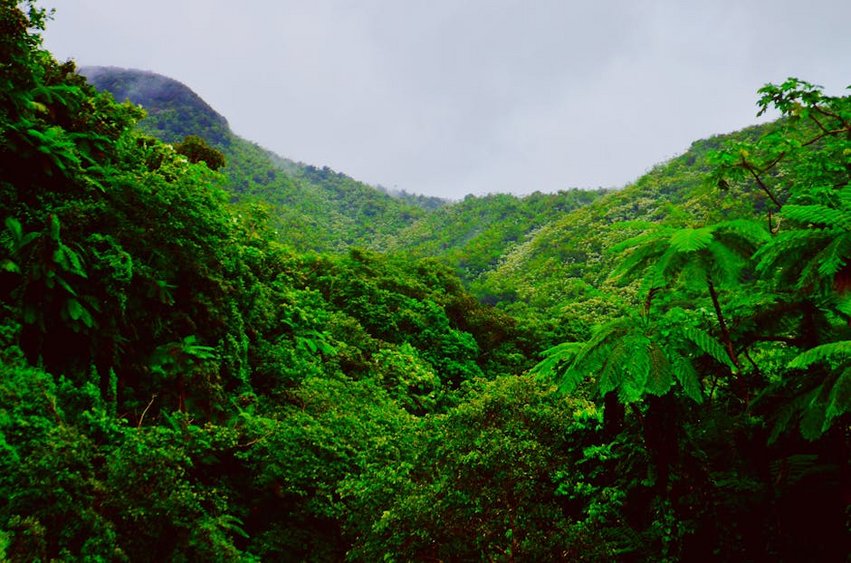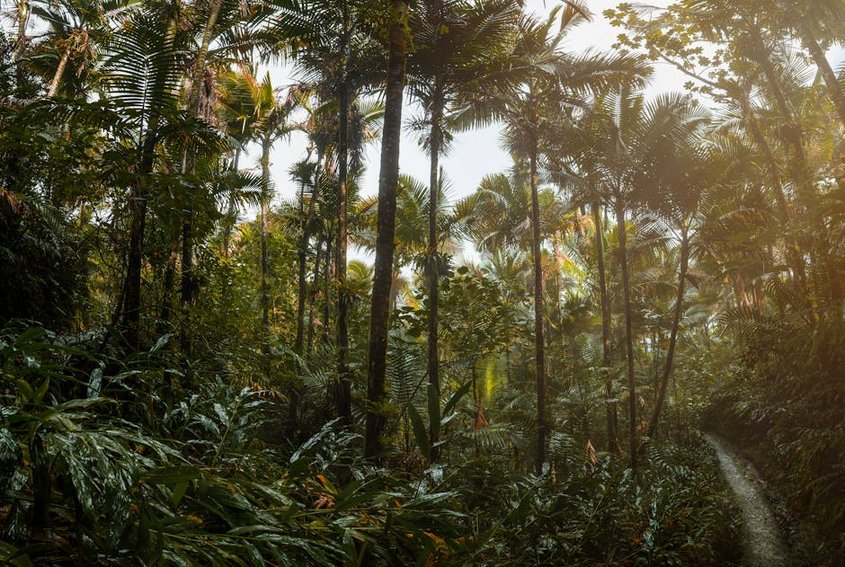Exploring Puerto Rico El Yunque Rainforest: Your Ultimate Adventure Guide
Imagine walking through lush, emerald-green canopies with the sound of coquí frogs serenading your journey—this is the magic awaiting you in Puerto Rico El Yunque Rainforest. As the only tropical rainforest within the U.S. National Forest System, El Yunque offers an unparalleled escape into nature’s wonderland, spanning over 28,000 acres of vibrant biodiversity. You’ll discover towering waterfalls, ancient Taino petroglyphs, and trails that lead to breathtaking panoramic views. Whether you’re an avid hiker or a family seeking adventure, this guide will help you navigate everything from seasonal visits to budget-friendly tips. Puerto Rico El Yunque Rainforest isn’t just a destination; it’s an immersive experience where every step reveals something new, from rare flora like the Puerto Rican parrot to serene natural pools perfect for a refreshing dip. Get ready to embrace the tranquility and excitement of one of the Caribbean’s most cherished natural treasures.
Puerto Rico El Yunque Rainforest Essential Information – What You Need to Know
Before diving into your adventure, understanding the basics of Puerto Rico El Yunque Rainforest ensures a smooth and enriching visit. Located in the northeastern part of Puerto Rico, about an hour’s drive from San Juan, this rainforest boasts a unique ecosystem with over 240 tree species and countless wildlife, including the endangered Puerto Rican parrot. The climate here is tropical, meaning it’s warm and humid year-round, but elevation changes bring cooler temperatures at higher points. Historically, El Yunque holds deep cultural significance for the Taino people, and you can still find remnants of their civilization, such as ceremonial sites, adding a layer of mystique to your explorations. Unlike other rainforests, El Yunque is easily accessible for day trips, making it ideal for travelers with limited time. You’ll appreciate its well-maintained trails and visitor centers, which provide educational exhibits on the area’s ecology and conservation efforts.
What is El Yunque Rainforest? – A Quick Overview
- El Yunque is the sole tropical rainforest in the U.S. National Forest System, covering approximately 28,000 acres with elevations ranging from 100 to 3,500 feet, creating diverse habitats for endemic species.
- It features over 13 miles of hiking trails, including popular routes like La Mina Trail and Mount Britton Tower, offering varying difficulty levels suitable for beginners and experienced hikers alike.
- The rainforest receives about 200 inches of rainfall annually, fostering a rich canopy of giant ferns, bamboo groves, and colorful orchids that thrive in its humid, misty environment.
- Budget-friendly visits cost around $50-100 per person, covering public transportation from San Juan (about $5-10 round trip), packed lunches, and free trail access, with optional low-cost stops at local fruit stands.
- Mid-range trips average $100-200 per person, including rental car fees ($30-50 daily), guided group tours ($40-80), and meals at nearby kiosks serving authentic Puerto Rican dishes like mofongo for $10-15.
- Luxury experiences can reach $200-300+ per person, featuring private guides, canopy zipline adventures ($60-100), and stays at eco-lodges with rainforest views, plus fine dining in nearby towns like Luquillo.
- U.S. Forest Service – El Yunque National Forest
- U.S. Department of State – Puerto Rico Travel Info
Key Facts and History – Cultural and Natural Significance
El Yunque’s history dates back centuries, with the Taino people considering it a sacred place where their gods resided. Today, it’s a protected area managed by the U.S. Forest Service, ensuring its preservation for future generations. You’ll notice that many trail names and landmarks, like Yokahú Tower, reflect this indigenous heritage, offering a glimpse into Puerto Rico’s rich past. The rainforest played a role in Spanish colonial times as a source of timber, but conservation efforts began in the early 20th century, leading to its designation as a national forest. This blend of natural beauty and cultural depth makes El Yunque more than just a scenic spot—it’s a living museum where you can connect with the island’s soul while enjoying outdoor activities.

Puerto Rico El Yunque Rainforest Planning Your Trip – Seasonal and Budget Advice
Planning your visit to Puerto Rico El Yunque Rainforest involves considering seasons, costs, and preparations to maximize your experience. The dry season, from December to April, offers clearer skies and easier hiking, while the wet season, May to November, brings lush greenery but more rain. Budget-wise, entry to the rainforest is free, but you’ll need to account for transportation, guided tours, and optional activities, which can range from $20 for self-guided hikes to $150 for private excursions. I recommend booking popular tours in advance, especially during peak months, to avoid disappointment. Additionally, check for any travel advisories or reservation requirements, as the forest sometimes limits visitor numbers to protect its ecosystem. With a little foresight, you can tailor your trip to match your interests, whether it’s bird watching, photography, or simply relaxing in nature’s embrace.
Best Time to Visit El Yunque Rainforest – Seasonal Breakdown
The ideal time to explore Puerto Rico El Yunque Rainforest depends on your preferences for weather and crowd levels. From December to April, the dry season provides sunny days with lower humidity, making trails like La Coca Falls more accessible and comfortable for hiking. However, this period also sees more tourists, so arrive early to secure parking and avoid lines. If you prefer solitude and vibrant foliage, visit during the wet season from May to November; just pack rain gear and be prepared for sudden showers that enhance the rainforest’s mystical atmosphere. Hurricane season peaks from August to October, so monitor weather forecasts closely. Regardless of when you go, mornings are generally less crowded and offer better wildlife sightings, such as spotting the elusive Puerto Rican parrot or hearing the dawn chorus of tree frogs.
Budget Planning and Costs – Affordable to Luxury Options
Essential Preparation Checklist – What to Bring and Do
Packing wisely ensures a safe and enjoyable trip to El Yunque. Start with sturdy, waterproof hiking shoes to navigate muddy trails, and bring lightweight, breathable clothing that dries quickly in the humid climate. Don’t forget insect repellent to ward off mosquitoes, a reusable water bottle to stay hydrated, and a waterproof bag for electronics. Check the official U.S. Forest Service website for any trail closures or reservation requirements, especially if visiting during holidays. I also recommend downloading offline maps or a GPS app, as cell service can be spotty in dense areas. Lastly, inform someone of your itinerary and carry a basic first-aid kit—this preparation will let you focus on the beauty around you without unexpected hassles.
Puerto Rico El Yunque Rainforest Top Attractions and Activities – Must-Do Experiences
El Yunque is packed with unforgettable attractions that cater to all interests, from adrenaline-pumping adventures to serene nature spots. You can start at the La Mina Trail, which leads to a stunning waterfall where you can take a refreshing swim, or ascend the Yokahú Observation Tower for 360-degree views of the canopy and coastline. For families, the Angelito Trail offers an easy hike to a peaceful swimming hole, while thrill-seekers might prefer ziplining through the treetops with licensed operators. Along the way, keep an eye out for wildlife like the Puerto Rican boa or colorful bromeliads, and don’t miss the interpretive centers that explain the rainforest’s ecology. Comparing El Yunque to other Caribbean rainforests, it stands out for its accessibility and well-marked paths, making it perfect for first-time visitors seeking both education and excitement.
Must-See Highlights – Iconic Spots Not to Miss
Your visit to Puerto Rico El Yunque Rainforest wouldn’t be complete without seeing its iconic highlights. La Coca Falls is a dramatic 85-foot waterfall cascading over moss-covered rocks, easily visible from the main road—perfect for photos. Next, hike the Mount Britton Trail to reach a stone tower offering panoramic vistas of the forest and ocean, especially breathtaking at sunrise. The Baño de Oro natural pool is another gem, where you can cool off in crystal-clear waters surrounded by lush vegetation. These spots are popular for a reason, so I suggest going early to enjoy them without crowds. Each highlight provides a unique perspective on El Yunque’s diversity, from its powerful waterways to its tranquil hideaways, ensuring you capture the essence of this natural wonder.
Hidden Gems and Local Favorites – Off-the-Beaten-Path Treasures
Beyond the main attractions, El Yunque hides lesser-known treasures that offer a more intimate experience. Explore the Juan Diego Creek, a series of secluded waterfalls and pools accessible via a short, unmarked path—locals love it for its serenity. Another hidden gem is the El Yunque Peak Trail, which challenges hikers with a steeper climb but rewards with untouched vistas and fewer tourists. For a cultural twist, visit the nearby Carabalí Rainforest Park, where you can horseback ride through forested trails and learn about Puerto Rican farming traditions. These spots often require a bit more effort to find, but they provide a deeper connection to the rainforest’s magic. I’ve found that chatting with local guides can reveal even more secret spots, so don’t hesitate to ask for recommendations during your trip.
Puerto Rico El Yunque Rainforest Practical Travel Information – Logistics Made Easy
Navigating Puerto Rico El Yunque Rainforest is straightforward with the right information on transportation, accommodations, and safety. Most visitors drive from San Juan, taking Route 3 or Route 191, which offer scenic routes into the forest; parking is available at major trailheads but fills up quickly by mid-morning. If you prefer public transport, buses and shared taxis run from San Juan to nearby towns, though they may not go directly to all entrances. For accommodations, options range from budget hostels in Río Grande to luxury resorts in Fajardo, all within a 30-minute drive. Safety-wise, El Yunque is generally secure, but stick to marked trails, avoid swimming in fast-moving waters after heavy rain, and be mindful of wildlife. This practical advice ensures your visit is both enjoyable and hassle-free, letting you immerse fully in the rainforest’s wonders.
| Category | Options/Features | Price Range (USD) |
|---|---|---|
| Budget Accommodations | Hostels and guesthouses in Río Grande with basic amenities, shared kitchens, and easy forest access | $50-100 per night |
| Mid-Range Stays | Hotels and vacation rentals in Luquillo or Fajardo, offering pools, on-site dining, and guided tour packages | $100-200 per night |
| Luxury Resorts | Eco-lodges and beachfront resorts with spa services, private tours, and rainforest views | $200-400+ per night |


